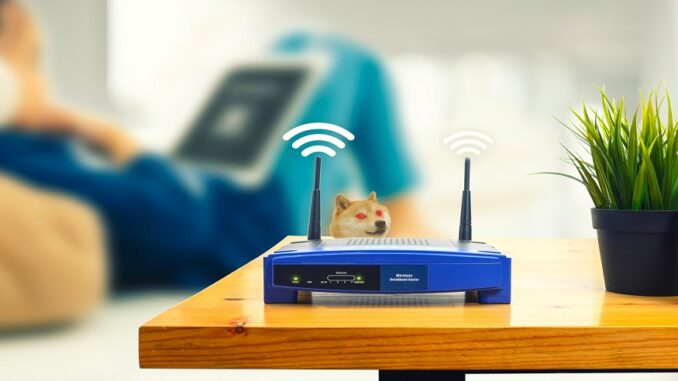
The internet has become the lifeblood of modern homes. Whether you’re a tech-savvy person building a smart home or someone more comfortable detached from the grid, you need internet access at least in some form.
But which type of internet connection is right for you? From fiber internet to DSL, a range of technologies are used to connect homes to the World Wide Web. Each of these technologies hasits advantages and disadvantages, making them ideal for some andimpractical for others.
Here, we explore some of the most common internet connection types and discuss who they’re for, so you can choose the best and most affordable type available in your area. Let’s get down to business.
Fiber-Optic Cable Internet
Fiber internet is the latest among internet connection technologies. Fiber internet uses fiber-optic cables instead of electrical cables. These cables are made of transparent polymer that allows light to go from one side to the other, even when the cable is bent. Instead of electrical signals, pulses of light are used to transmit data.
Light is faster than electricity. Light waves can also pack a higher density of data than electrical cables. These two factors make fiber internet much faster than traditional cable connections. In an experiment, scientists were able to achieve data transfer rates of up to 1 petabyte (1024 terabytes) per second—fiber is the future of the internet.
Still, fiber-optic cables are costlier than electrical cables. They also require a more protective coating to limit erosion and other forms of damage. Fiber-optic cables can also only bend to a certain degree and excessive bending can disrupt the signal. This is why most ISPs still use conventional cables for most connections.
Internet providers are gradually shifting to fiber for its superior speed and lower ping. Fiber internet is available in many cities today, although it’s yet to reach suburban and rural areas. Grande Internet, for example, is already fiber-powered and delivers download speeds of up to 1200 Mbps. Visit buytvinternetphone.com to check if Grande internet is available in your area.
Fiber-Optic Cable Internet is Right for You If:
- You want high download and upload speeds
- You want low ping
- You’re willing to a premium price
- Fiber internet is available in your area
Cable Internet
Cable internet access is the most common type of internet connection in the US. It uses coaxial cables similar to those used by TV to transmit data between you and your ISP. Cable internet is the second fastest form of internet connection after fiber internet, with maximum download speeds from 100 to 300 Mbps.
Cable internet is more flexible than fiber internet, both figuratively and literally. Coaxial cables cost less than fiber-optic cables, making cable internet more readily available. Coaxial cables can also be bent without risking interruption or damage, making them more reliable.
Still, electricity travels slower than light. So even with a maximum download speed of 300 Mbps, cable internet connections can’t match the low ping of fiber-optic internet. Cable internet is still not available in some rural areas where people have to resort to other options.
Cable Internet is Right for You If:
- You don’t have access to fiber internet
- You want reliable internet speed and ping
- You’re willing to sacrifice speed for a lower fee
DSL and Dial-Up Internet
Dial-up internet is mostly outdated now but was one the most common type of internet connection. A dial-up connection works by linking a phone line to a computer. The line can’t be used to make phone calls while it’s being used for an internet connection.
DSL or Digital Subscriber Line is an improved version of dial-up internet that uses separate lines for internet and phone. Users can make calls and use the internet at the same time.
DSL and dial-up internet connections are slower than cable internet, averaging at 25 Mbps with maximum speeds of 100 Mbps. However, these connections may be the fastest option in areas where cable or fiber internet isn’t available.
DSL and Dial-Up Internet are Right for You If:
- Fiber and cable internet aren’t available in your area
- You don’t need high download speeds
- You don’t want to install coaxial wires for cable internet
Satellite Internet
Satellite internet is the slowest type of internet connection. Instead of using cables or cellular towers, a satellite connection uses satellites in geostationary orbits to communicate data. You connect by installing a dish on your rooftop where it can communicate with satellites in orbit.
Satellite connections are available even in places where other internet services aren’t, leaving them the only option for some people. Satellite connections can get disturbed when the sky isn’t clear, so they’re not very reliable. The top speeds you can expect from a satellite connection vary from 12 to 100 Mbps.
Satellite Internet is Right for You If:
- You don’t have any other type of internet connection available
- You have a clear sky most of the time
- You don’t need high download or upload speeds
Final Thoughts
And there you have it. Fiber is the fastest and the most reliable of the four common types of connections. Grande Internet powered by Astound Broadband is a popular fiber ISP in Texas for its elaborate infrastructure. Visit buytvinternetphone.com to learn more about ISPs available in your area.

Leave a Reply
You must be logged in to post a comment.